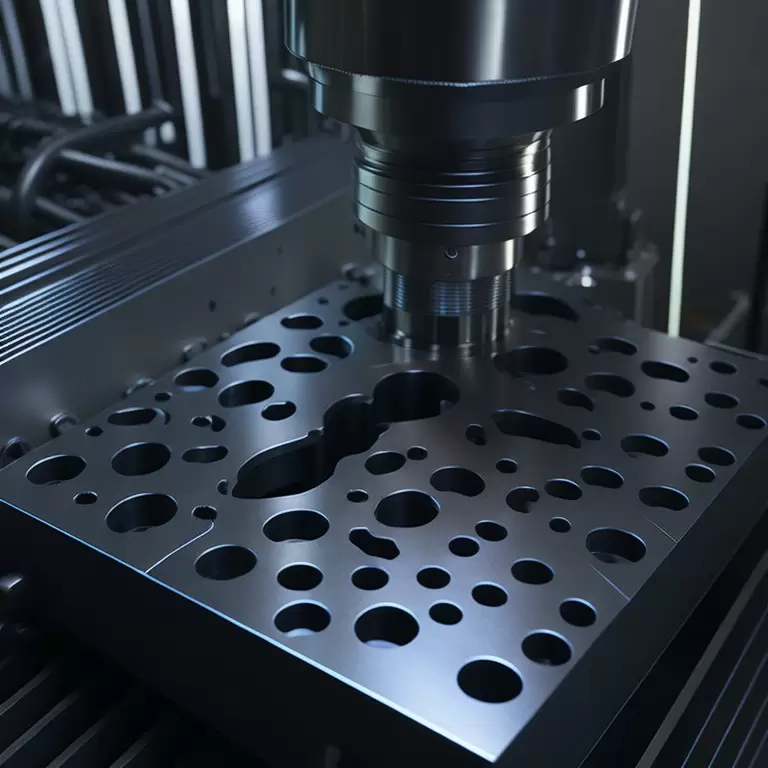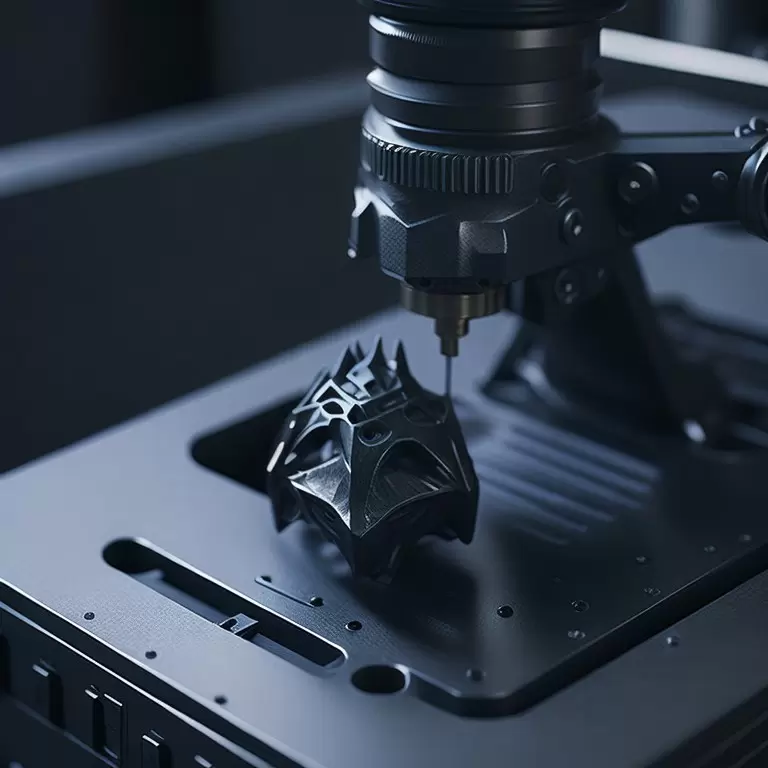Table of Contents:
- Introduction
- PET Material Overview
- CNC Machining Overview
- PET CNC Machining Process
- PET CNC Machining Applications
- Advantages and Disadvantages of PET CNC Machining
- Conclusion
-
1.Introduction
PET CNC machining refers to the process of using computer numerical control (CNC) machines to shape and form polyethylene terephthalate (PET) material into various products and components. PET is a popular thermoplastic material that is commonly used in a wide range of industries, including packaging, medical, and automotive.
The importance of PET CNC machining lies in its ability to produce complex and precise shapes and parts with a high level of accuracy and consistency. It also allows for faster production times and reduced waste, which can result in cost savings for manufacturers.
Advantages of PET CNC machining include the ability to produce intricate designs and shapes with high precision and accuracy, faster production times, and reduced waste compared to traditional machining methods. Additionally, CNC machines can perform multiple operations on a single piece of material, further increasing efficiency and reducing costs.
-
2.PET Material Overview
Polyethylene terephthalate (PET) is a thermoplastic polymer that is widely used in various industries. It has several properties that make it an ideal material for CNC machining, including:
- High strength and stiffness
- Good dimensional stability
- Excellent resistance to impact and abrasion
- Low moisture absorption
- Good chemical resistance
- High clarity and transparency
There are several types of PET material used in manufacturing, including:
- PETG (glycol-modified PET): This type of PET has improved clarity and toughness, making it ideal for applications in the food packaging and medical industries.
- PCT (polycyclohexylene-dimethylene terephthalate): This material has higher heat resistance than other types of PET, making it suitable for use in high-temperature applications, such as automotive parts and electronics.
- PETE (polyethylene terephthalate): This is the most common type of PET material and is widely used in the manufacturing of beverage bottles, food packaging, and other consumer goods.
PET material has many applications in various industries, including:
- Packaging: PET is commonly used in the manufacturing of beverage bottles, food containers, and other packaging materials due to its strength, clarity, and low moisture absorption.
- Medical: PET is used in medical devices and equipment due to its excellent chemical resistance, transparency, and biocompatibility.
- Automotive: PET is used in the manufacturing of automotive parts, such as seat belts, airbags, and fuel tanks, due to its high strength and stiffness.
- Electronics: PET is used in electronic devices, such as LCD screens, due to its high clarity and low moisture absorption.
-
3.CNC Machining Overview
CNC machining is a manufacturing process that uses computer-controlled machines to shape and form materials into precise and complex shapes. The process involves designing a part using computer-aided design (CAD) software and then programming the CNC machine to follow the design and cut the material accordingly.
There are several types of CNC machines used in manufacturing, including:
- CNC milling machines: These machines use rotary cutters to remove material from a workpiece to create the desired shape.
- CNC turning machines: These machines use a rotating workpiece and a stationary cutting tool to create cylindrical parts.
- CNC drilling machines: These machines use rotating drill bits to create holes in a workpiece.
The CNC machining process typically involves several steps, including:
- Design: The part or component to be machined is designed using CAD software.
- Programming: The CAD design is converted into instructions for the CNC machine using computer-aided manufacturing (CAM) software.
- Setup: The material is mounted onto the CNC machine, and the machine is calibrated to ensure accurate and precise machining.
- Machining: The CNC machine follows the programmed instructions to cut and shape the material into the desired shape.
- Finishing: Once the machining is complete, the finished part is inspected, and any necessary finishing processes, such as polishing or painting, are performed.
CNC machining offers several advantages over traditional machining methods, including increased precision and accuracy, faster production times, and reduced waste.
-
4.PET CNC Machining Process
PET CNC machining process involves several steps, including the preparation of the material, the selection of the appropriate CNC machining technique, and the use of suitable CNC machining tools.
- Preparation of PET Material:
PET material needs to be properly prepared before CNC machining to ensure optimal results. This includes cleaning the material to remove any contaminants or debris, drying the material to remove any moisture, and ensuring that the material is properly secured to the CNC machine. - PET CNC Machining Techniques:
There are several CNC machining techniques that can be used to shape PET material, including milling, turning, drilling, and laser cutting. The choice of technique depends on the specific part or component being manufactured, as well as the desired level of precision and accuracy. - CNC Machining Tools for PET Material:
The selection of CNC machining tools for PET material is critical to achieving accurate and precise machining. Some common CNC machining tools used for PET material include end mills, drill bits, turning tools, and routers. The tools must be designed specifically for PET material and should be properly maintained to ensure optimal performance.
Some other considerations when CNC machining PET material include the use of appropriate cutting speeds and feeds, the selection of suitable cutting fluids to help reduce friction and heat, and the use of proper cutting techniques to prevent chipping or cracking of the material.
By following proper preparation, selecting appropriate CNC machining techniques, and using suitable CNC machining tools, manufacturers can produce high-quality, precision components from PET material.
-
5.PET CNC Machining Applications
PET CNC machining has many applications in various industries due to its unique properties and benefits. Some of the most common applications of PET CNC machining include:
- Medical Industry Applications:
PET is widely used in the medical industry due to its biocompatibility and excellent chemical resistance. PET CNC machining is used to produce various medical devices and equipment, including surgical instruments, implants, and diagnostic equipment. - Packaging Industry Applications:
PET is commonly used in the packaging industry due to its strength, clarity, and low moisture absorption. PET CNC machining is used to produce various packaging materials, including beverage bottles, food containers, and other consumer goods. - Automotive Industry Applications:
PET is used in the automotive industry due to its high strength and stiffness. PET CNC machining is used to produce various automotive parts, including seat belts, airbags, and fuel tanks. - Other PET CNC Machining Applications:
Other applications of PET CNC machining include the production of electronic devices such as LCD screens, and the manufacturing of consumer goods such as toys and household appliances.
PET CNC machining is an effective manufacturing process that offers several benefits, including increased precision and accuracy, faster production times, and reduced waste. As such, it is becoming increasingly popular in various industries for producing high-quality, precision components.
-
6.Advantages and Disadvantages of PET CNC Machining
PET CNC machining offers several advantages over traditional machining methods, including:
Advantages of PET CNC Machining:
- Precision and Accuracy: CNC machines can perform complex and precise cuts with high accuracy, producing parts with tight tolerances.
- Faster Production Times: CNC machines can produce parts faster than traditional machining methods, reducing lead times and increasing efficiency.
- Reproducibility: CNC machines can produce identical parts repeatedly, ensuring consistent quality and reducing errors.
- Reduced Waste: CNC machines produce less waste than traditional machining methods, which can be recycled and reused.
- Flexibility: CNC machines can produce a wide range of parts and shapes, making them suitable for various applications.
And here you can choose the V1 Machining,V1 Provide manufacturing process, metal, and plastic instructions to meet the specific requirements of your CNC machined parts.
Despite the advantages, there are also some disadvantages of PET CNC machining, including:
Disadvantages of PET CNC Machining:
- High Initial Investment: CNC machines are expensive to purchase and maintain, requiring significant capital investment.
- Skilled Operators: CNC machines require skilled operators who are trained to program and operate the machines.
- Programming Time: Programming CNC machines can be time-consuming and complex, especially for complex shapes and parts.
- Material Limitations: Some materials, such as certain composites or metals, may not be suitable for CNC machining.
Overall, PET CNC machining offers several advantages over traditional machining methods, including increased precision and accuracy, faster production times, and reduced waste. However, there are also some disadvantages, including the high initial investment, the need for skilled operators, and the limitations on the materials that can be used.

-
7.Conclusion
PET CNC machining is an effective manufacturing process that offers several benefits over traditional machining methods. With its unique properties, PET material is suitable for various applications in different industries. PET CNC machining offers increased precision, faster production times, and reduced waste, making it an ideal choice for manufacturers looking to improve their production processes.
In the future, PET CNC machining is expected to continue to grow in popularity as manufacturers seek to increase efficiency, reduce waste, and improve quality. As CNC machines become more advanced, we can expect to see even greater precision and accuracy, further reducing errors and improving production times.
In conclusion, PET CNC machining is a valuable manufacturing process that offers several advantages over traditional machining methods. By carefully preparing the material, selecting the appropriate CNC machining techniques, and using suitable CNC machining tools, manufacturers can produce high-quality, precision components from PET material. With its many applications and benefits, PET CNC machining is a promising technology that will continue to shape the future of manufacturing.













